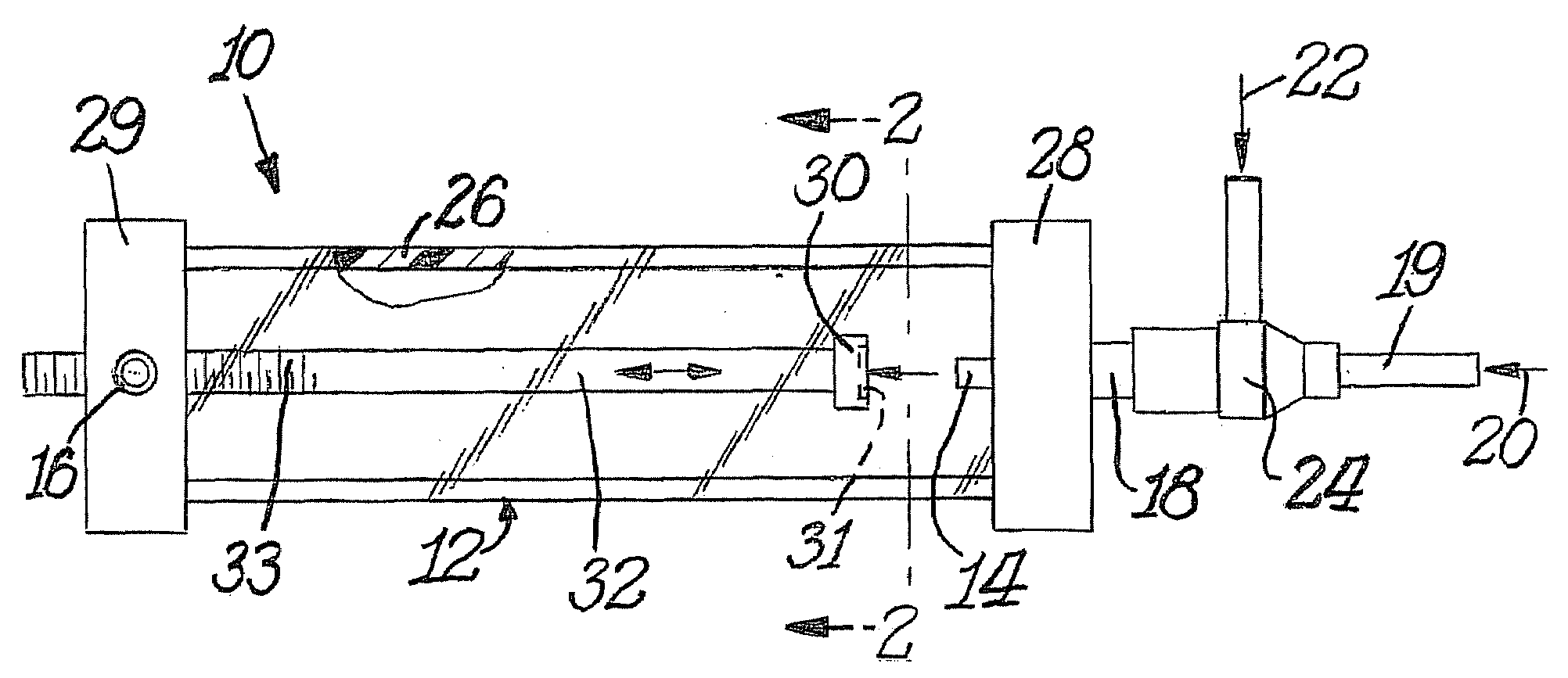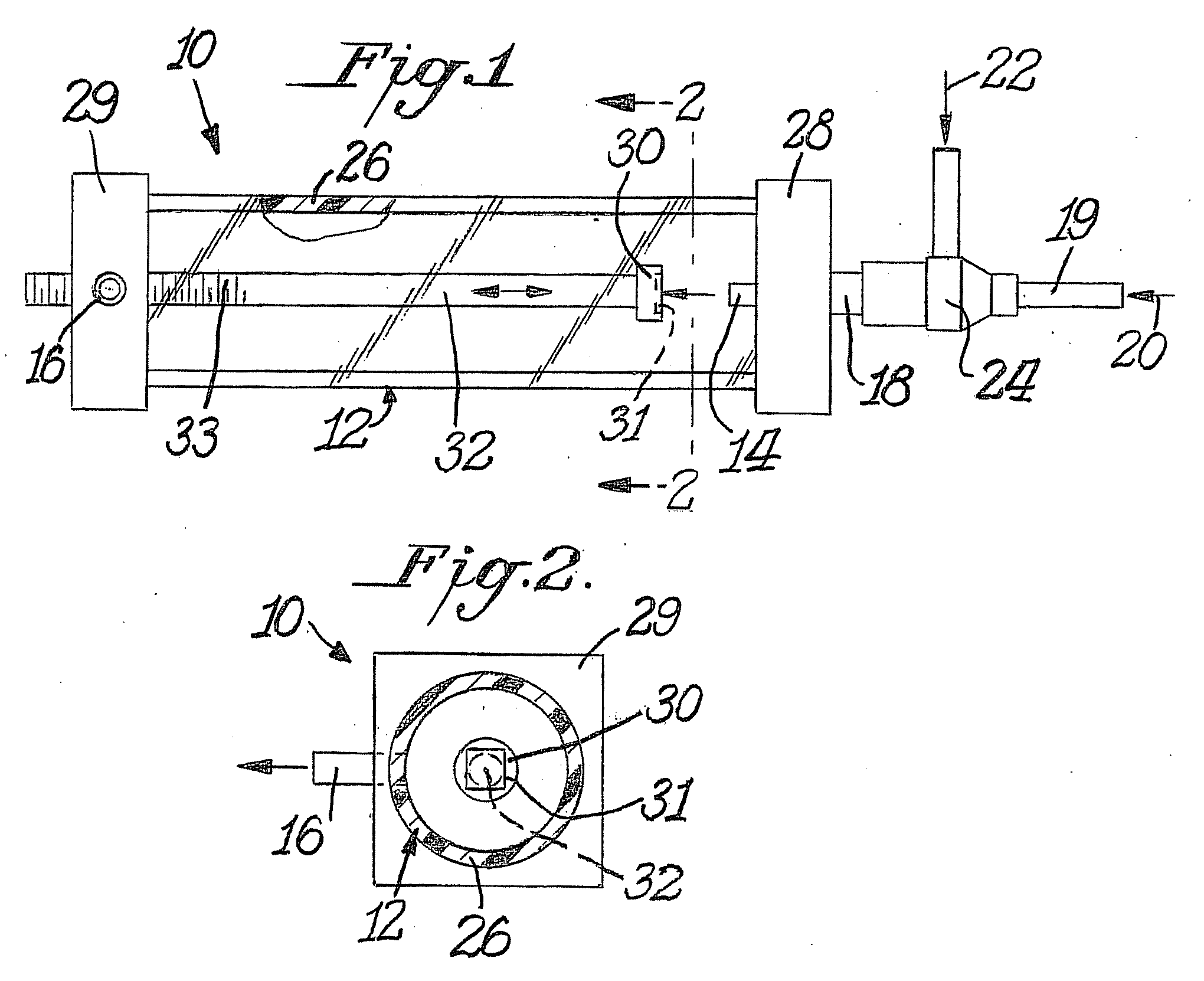Method for disentanglement of carbon nanotube bundles
a carbon nanotube and bundle technology, applied in the field of disentanglement of carbon nanotube bundles, can solve the problem of violent movement of water/nanotube mixture, and achieve the effect of improving the dispersion and disentanglement of carbon nanotubes
- Summary
- Abstract
- Description
- Claims
- Application Information
AI Technical Summary
Benefits of technology
Problems solved by technology
Method used
Image
Examples
example 1
[0026]Three groups of multiple wall nanotubes were prepared for disentanglement. Two were treated with a commercially available chemical dispersant and one without. Twelve samples were made from the three groups of materials. Six of the twelve samples were treated with the impact anvil in place and six without. Water pressures were 30,000 psi while back pressure in chamber 12 was maintained at 80-100 psi, leading to significant energy transfer to the nanotubes.
[0027]The treated dispersions appeared to stay well disentangled after treatment in chamber 12, the degree of disentanglement dependent on the exact processing conditions and feed materials. Table 1 summarizes the testing methodology and results. As shown in this Table, three starting nanotube samples were analyzed, all at an initial weight of 0.375 g. Two of those samples (samples R-20-179-1 and R-20-179-2) were pretreated with a dispersing agent prior to introduction into chamber 12. The third sample (R20-179-3) was not pret...
example 2
[0031]Table 2 contains the processing conditions and relative volumes of three samples of single wall nanotubes (SWNTs) that were prepared for disentanglement. This Table illustrates the effects of different feed pressures and number of passes on SWNT dispersion. Evaluation of the resulting products was done visually, i.e. volume change after settling in water after the various treatments. Volume change correlates to CNT disentanglement as the disentangled nanotubes can no longer pack as efficiently in a given volume once the bundles separate.
[0032]All three samples were treated with the impact anvil in place. Table 2 shows the relative volume change of 5 grams of SWNTs after treatment at 30 ksi water feed pressure and passes through the chamber compared to an untreated sample. The samples were allowed to settle for over three days after transfer to glass jars. There has been no indication that the treated samples will settle any more over time.
[0033]This Table also illustrates the ...
PUM
 Login to View More
Login to View More Abstract
Description
Claims
Application Information
 Login to View More
Login to View More - R&D
- Intellectual Property
- Life Sciences
- Materials
- Tech Scout
- Unparalleled Data Quality
- Higher Quality Content
- 60% Fewer Hallucinations
Browse by: Latest US Patents, China's latest patents, Technical Efficacy Thesaurus, Application Domain, Technology Topic, Popular Technical Reports.
© 2025 PatSnap. All rights reserved.Legal|Privacy policy|Modern Slavery Act Transparency Statement|Sitemap|About US| Contact US: help@patsnap.com


